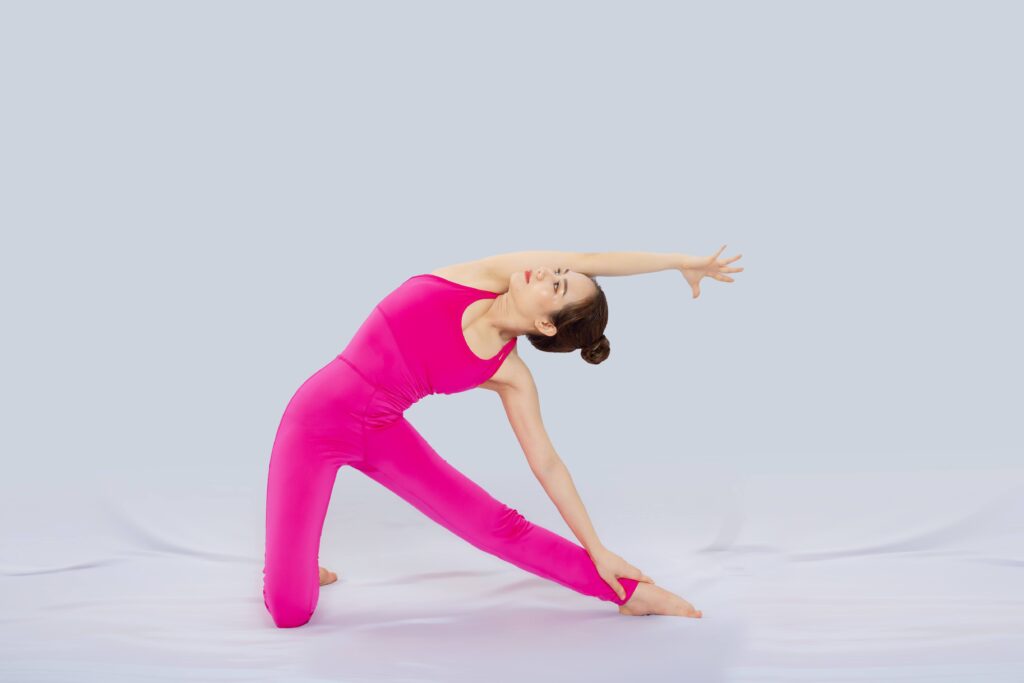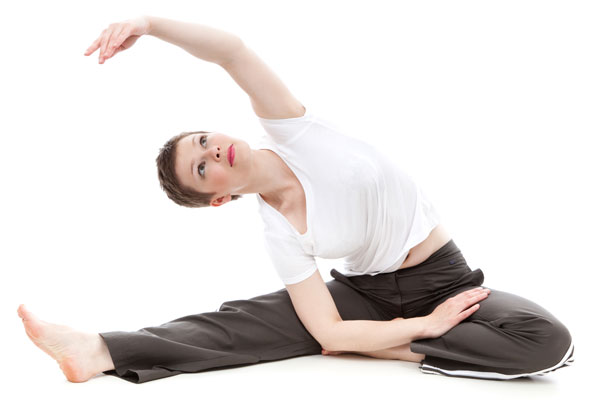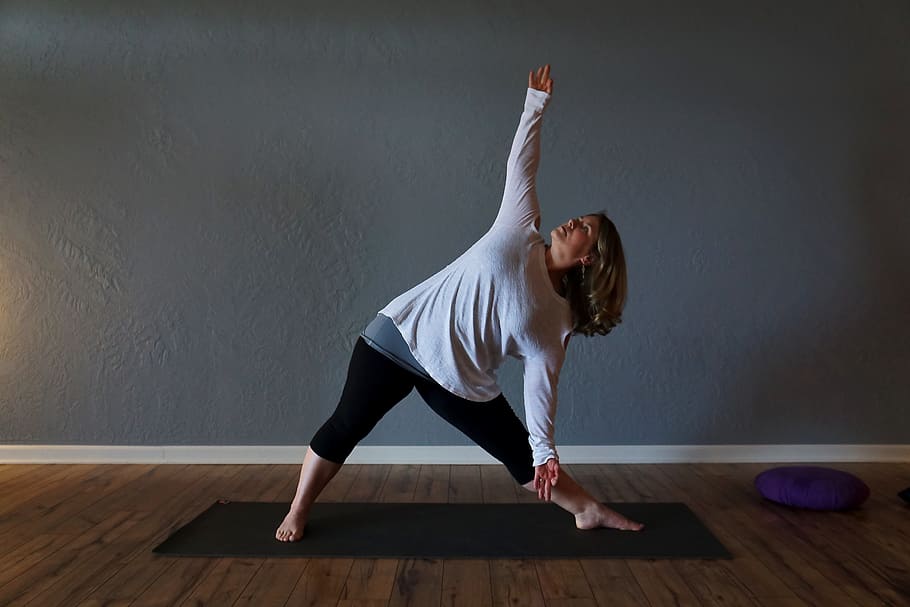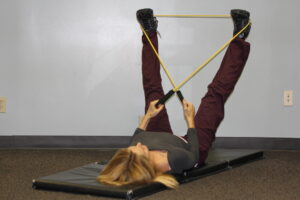Introduction: Unlocking the Potential of Stretching
Welcome to the foundational steps of any fitness regimen—stretching! Often overshadowed by high-energy workouts, stretching is the unsung hero that can make or break your fitness journey. In this introduction, we’ll unravel the stretching benefits that are crucial for anyone looking to enhance their workout routine. Whether you’re a seasoned athlete or a fitness newbie, incorporating stretching into your regime is a game-changer.
Stretching isn’t just a means to prevent injury; it’s a way to communicate with your body. It’s a dialogue between your muscles and your intentions, setting the stage for the physical demands to come. As we delve into this topic, you’ll discover why stretching is not just an optional extra, but an essential element for a well-rounded fitness routine.
Why Stretching Matters in Workouts: The Flexibility Factor
When it comes to working out, why is stretching so beneficial? Stretching isn’t merely a preliminary task to rush through before the ‘real’ workout begins. It holds its own in the realm of fitness, providing a plethora of advantages that can elevate your physical abilities to new heights.
Imagine your muscles are like rubber bands. Just as a rubber band stretches more easily when it’s warm, your muscles perform better when they are limber. That’s where pre-workout stretch comes into play, preparing your body for the intensity ahead and setting you up for optimal performance. And after you’ve pushed your limits, post-workout stretching steps in to guide your muscles back to a state of equilibrium, promoting recovery and reducing the risk of soreness.
Dynamic and Static Stretching: The Best of Both Worlds
Before we jump further, let’s break down the types of stretches that will be your companions on this fitness journey:
- Dynamic Stretching: These are active movements where joints and muscles go through a full range of motion. They’re typically incorporated into warm-ups to get your blood flowing.
- Static Stretching: This involves extending a muscle to its furthest point and holding that position. It’s usually part of a cool-down to relax your muscles after a workout.
The Science Behind Stretching: More Than Meets the Eye

Stretching his hand up to reach the stars, too often man forgets the flowers at his feet.
The act of stretching does more than just feel good—it’s a science-backed practice that can significantly impact your muscle health and overall fitness. When you stretch, you’re not just elongating muscles; you’re also increasing blood flow, enhancing flexibility, and decreasing muscle tension.
The role of stretching in preventing workout injuries cannot be understated. By improving circulation, stretching helps to deliver oxygen-rich blood to your muscles, which is essential for muscle repair and growth. Moreover, it can lead to a reduction in muscle stiffness, which often leads to injuries.
Stretching for Circulation and Muscle Health
The physiological impacts of stretching are profound:
- Improved Blood Circulation: Enhanced blood flow means more nutrients to the muscles and removal of waste byproducts, like lactic acid, which can contribute to muscle soreness.
- Reduced Muscle Stiffness: Regular stretching can help decrease muscle resistance during workouts, making movements more fluid and less taxing on your body.
Benefits of Pre-Workout Stretching
Setting the Stage for Success
Think of pre-workout stretching as the opening act for the main event. By engaging in a routine of dynamic stretches, you’re signaling to your body that it’s time to perform. The benefits of stretching before a workout are numerous, but let’s focus on the most impactful ones.
Preventing Injuries: The Proactive Approach
By incorporating pre-workout stretching into your routine, you’re taking a proactive approach to your physical health. Stretching warms up the muscles, making them more pliable and less prone to strains and sprains. It’s the equivalent of warming up your car on a cold morning; it just runs better.
Enhancing Performance: Priming the Muscles
Dynamic stretches in particular prepare the body for the intensity of the workout to come. They can improve your range of motion, power, and efficiency during exercise, translating to better performance, whether you’re lifting weights, running, or engaging in any other form of physical activity.
Effective Pre-Workout Stretching Routine

Crafting Your Warm-Up
An effective pre-workout stretching routine can set the tone for a successful exercise session. Here’s a simple routine that targets key muscle groups and gets the blood flowing:
Key Stretches for Different Muscle Groups
- Leg Swings: Target the hamstrings and hip flexors with forward and side-to-side leg swings.
- Arm Circles: Engage the shoulders and arms with large and small arm circles to prep for upper body work.
- Torso Twists: Activate the core and spine with gentle standing twists for rotational mobility.
Each stretch should be performed for about 30 seconds to 1 minute, ensuring you’re getting the full benefit without overdoing it.
Importance of Post-Workout Stretching
The Unwinding Phase
After pushing your limits, it’s crucial to engage in post-workout stretching. This is when static stretching comes into play, helping to cool down the body, facilitate muscle recovery, and promote flexibility.
Facilitating Muscle Recovery: The Path to Progress
Post-exercise, your muscles are warm and receptive, making it the perfect time to stretch. This practice can help in the release of muscle tension and the reduction of lactic acid buildup, which often leads to soreness.
The Long-Term Benefits
Incorporating a consistent post-workout stretching routine not only aids in recovery for your next session but also contributes to overall muscle health and flexibility. It’s a key component in ensuring that your fitness journey is sustainable and free from unnecessary setbacks due to injury or excessive soreness.
Cool Down Stretches for Post-Workout
Easing Into Recovery
After an intense workout, your body deserves to wind down, and there’s no better way to do that than with a series of post-workout stretches. These stretches should be as much a part of your routine as the workout itself, acting as a signal to your body that it’s time to shift from high gear into a state of recovery.
Stretching Techniques for Reducing Muscle Soreness
- Hamstring Stretch: Sit on the ground and reach for your toes, keeping your knees straight to elongate the back of your legs.
- Quad Stretch: Stand on one leg and pull the other foot towards your glutes, feeling the stretch in the front of your thigh.
- Shoulder Stretch: Bring one arm across your body and use the other arm to press it closer, stretching out your shoulder muscles.
Performing these stretches can help reduce muscle tightness and soreness, which is often felt a day or two after a rigorous workout, known as delayed onset muscle soreness (DOMS).
Stretching for Flexibility

Stretching improves flexibility by loosen up your muscle.
– WebMD
Beyond the Workout: Stretching as a Habit
While the immediate benefits of stretching post-workout are clear, the long-term impact on flexibility can be profound. Regular stretching can lead to improvements in range of motion, making everyday movements easier and improving your performance in a variety of physical activities.
Incorporating Yoga Stretches for Enhanced Flexibility
Yoga is an excellent way to incorporate stretching for flexibility into your fitness routine. Poses such as the Downward Dog, Pigeon Pose, and Cobra Stretch target multiple muscle groups and can significantly improve your flexibility over time.
The Flexibility-Mobility Connection
Flexibility and mobility are two sides of the same coin, and by improving one, you often see benefits in the other. Flexibility refers to the ability of your muscles to stretch, while mobility is the ability of your joints to move freely. Together, they contribute to a smoother, more efficient movement in your workouts and daily life.
Common Myths about Stretching
Dispelling the Doubts
Stretching is sometimes misunderstood, leading to myths that can deter individuals from incorporating this crucial practice into their routines.
Debunking the Myth of Stretching Causing Muscle Weakness
One common misconception is that stretching can lead to muscle weakness. However, when done correctly, stretching can actually enhance muscle endurance and strength. It’s all about balance and knowing when to incorporate dynamic versus static stretching in relation to your workouts.
The Bottom Line on Stretching Myths
By addressing these myths and providing clear, evidence-based information, we can empower individuals to make informed decisions about their stretching routines. Stretching, when integrated properly, is a powerful tool that supports both immediate performance and long-term health.
Tips for Safe and Effective Stretching
Perfecting Your Stretch: Safety First
Stretching can be as complex as any workout, and doing it safely is crucial for maximizing benefits and minimizing risk of injury. Here’s how to ensure your stretching is both safe and effective:
Importance of Proper Form During Stretches
- Warm-Up First: Never stretch cold muscles. Ensure you’re warmed up with light activity to avoid strains.
- Ease Into Stretches: Go into each stretch slowly and avoid bouncing, which can cause muscle tears.
- Hold and Breathe: Hold each stretch for 15-30 seconds and breathe deeply. This helps oxygenate the muscles and deepen the stretch.
- Listen to Your Body: Stretching should cause a feeling of mild tension, not pain. If it hurts, you’ve gone too far.
Creating a Safe Stretching Environment
- Use Proper Equipment: A non-slip yoga mat can prevent falls, and proper attire will allow for full range of motion.
- Stay Hydrated: Muscles need hydration to function optimally. Drink water before and after your stretching routine.
- Consistency is Key: Regular stretching can lead to better results and less discomfort over time.
The Role of Rest
- Rest is Essential: Just like with any workout, your muscles need time to recover from stretching, especially if it’s intense.
Personalized Stretching Plans
Tailoring Your Stretch: Individual Needs and Goals
When it comes to stretching, one size does not fit all. Your body is unique, and your stretching routine should reflect that. Here’s how to create a personalized stretching plan to maximize the benefits of stretching:
Assessing Your Body
Start by understanding your body’s current flexibility and mobility. Identify tight spots and areas that need more attention. This could be the shoulders for those who sit at a desk all day, or the hamstrings for runners. By assessing your body, you can maximize the Benefits of stretching.
Adapting Stretching Routines for Different Fitness Levels
- Beginners: Start with basic stretches and focus on learning the correct form. Gradually increase the duration and intensity of your stretches as your flexibility improves.
- Intermediate: Incorporate a mix of static and dynamic stretches, targeting muscle groups used in your regular workouts.
- Advanced: Explore deeper stretches and hold them longer. You might also add yoga or Pilates to your routine for a greater range of motion.
Setting Stretching Goals
- Short-Term Goals: These might include stretching for a few minutes every day or mastering a particular yoga pose.
- Long-Term Goals: Aim for holistic improvements in flexibility or integrating advanced stretching techniques into your routine.
Monitoring Progress and Adjusting Your Plan
- Keep track of how your flexibility improves over time, and don’t be afraid to adjust your plan. If a particular stretch isn’t working for you, replace it with another that targets the same area.
Conclusion: Embracing the Stretch
The Final Stretch: Key Takeaways
As we draw this guide to a close, let’s circle back to the core message: stretching is an integral part of any fitness routine. It prepares you for the demands of physical activity, aids in recovery, and can improve overall flexibility, leading to better performance and reduced risk of injury. Remember the profound stretching benefits we’ve discussed—from enhancing flexibility to aiding in muscle recovery and beyond. Stretching is not just an add-on; it’s a crucial element that can bolster your entire fitness journey.
Now, it’s your turn to prioritize stretching. Share your experiences, your progress, and even your challenges in the comments below. Let’s learn from each other and build a community that stretches together towards better health and fitness.








